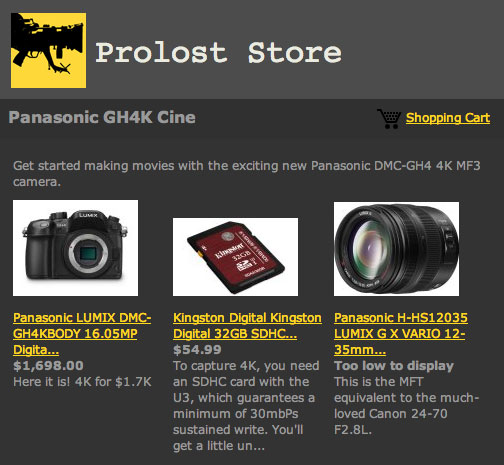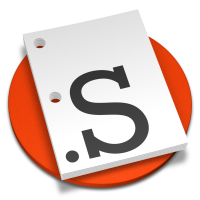Got a DV Rebel on your Christmas list? Or maybe you're a DV Rebel looking to help your homies make your Hanukkah hot? Here are some ideas for you and yours.
The DV Rebel's Guide
Well, duh. So many of you have written to tell me how, after you read it yourself, you turned around and bought The Guide for all your filmmaking friends. Well that makes you awesome. Be awesome.
Drobo
I bought a Drobo not long ago, and it has added years to my life. It's a mass storage device that's smarter and more handsome that a traditional RAID. You can cram any configuration of drives into it and it will keep your data redundantly safe. Don't worry about mixing and matching drives, just throw in what's cheap and plentiful. As drives get cheaper, toss bigger ones in there. When a drive goes bad, Drobo will let you know to swap it out. My half a terrabyte of digital photos has never felt safer!
Use the "drobulator" to figure out how much storage you'll get with various drive configurations. Better to start with small cheap drives and upgrade as you need more storage. I had initially considered getting two 750GB drives, but the drobulator showed me that three 500GB drives would give me more storage for less dough.
It's not the cheapest storage solution out there, but the peace of mind and flexibility are more than worth it.
Canon HV20
Feeling generous? This little camcorder that could is still the cheapest best DV Rebel cam. Giving someone this camera strapped to a copy of The Guide with a ribbon of primacord is a great way of saying "shut up already and make a movie."
Adobe After Effects CS3 Professional Studio Techniques
Stay tuned for a longer post about this must-have book, but for now suffice it to say that Mark's venerable book is the best companion to The Guide you can find, and still the one and only book that approaches real visual effects compositing from the generalist standpoint afforded only by high-end systems like Discrete flame and, ironically, the affordable and ubiquitous Adobe After Effects. Get this massively-revised edition now, despite the sad fact that a few perfectly good pages near the front somehow mistakenly got covered with words written by some guy named "Stu."
The War of Art
In 1999 I made the most difficult decision of my life: Quiting my dream job at Industrial Light & Magic to help two friends start a little company called The Orphanage. At the core of the DV Rebel code is the impetus to do what you love, against all odds. Whenever I need a kick in the Rebel pants, I read a bit of The War of Art by Steven Pressfield. A better book on the creative process you will not find. Warning: ProLost is not responsible if you quit your job after reading this book! Well, maybe a little.
Bambi vs. Gozdilla
Another spiritual ompanion to The Guide, this is David Mamet's insightful, scathing, delightful and perspicacious perspective "on the nature, purpose, and practice of the movie business." Featuring chapters such as "How Scripts Got So Bad" and "Bringing a Gun to a Knife Fight; or, A Short Tour of the Concept of Suspension of Disbelief," this book will either teach you how to understand and navigate the strange world of Hollywood film production, or inspire you to avoid them altogether.
Baratza Maestro Conical Burr Coffee Grinder
Readers of The Guide know that I love coffee, and that the process of coffee discovery begins with a burr grinder. The Maestro is affordable and awesome. Find more coffee gift ideas in this Rebel Café thread.
Canon EF 50mm f1.4 USM Lens
or
Canon EF 50mm f/1.8 II Lens
or
Nikon 50mm f/1.4D AF Nikkor Lens
or
Nikon 50mm f/1.8D AF Nikkor Lens
Chances are you or someone you know have a digital SLR. Chances are it sports the all-purpose zoom lens that it shipped with. And chances are the photos it makes are good, but maybe a little less that what you'd hoped from this step up in photographic equipment.
By far the best treat for a digital photographer learning the wily ways of her new DSLR is a fast 50mm lens. Fast meaning a maximum aperture f/1.8 or better. Larger apertures mean more light, which means you can shoot in less light with slower ISO settings and faster shutter speeds. But most importantly, larger apertures mean shallow depth of field, which adds an extra dimension of control and velvety bitchin'-ness to your compositions.
There's a popular idea that the 50mm focal length "best approximates human vision" or whatever. That's a highly subjective idea that is best ignored, especially since it has its roots in the 35mm negative size, for which the 50mm is considered "normal," i.e. neither wide-angle nor telephoto. Unless you have a DSLR with a full-frame chip (such as my beloved Canon 5D or the badass new Nikon D3) this measure doesn't apply. On a smaller-chipped DSLR, a 50mm lens is a telephoto lens, falling into the "portrait" range—which is perfectly awesome and worth having, irrespective of all that worthless pontification about matching human eyeballs.
Both Canon and Nikon have f/1.8 offerings that are insanely affordable, and f/1.4 50's that are the best lens deals going (in terms of quality for the price). If you want to go big, Canon's EF 50mm f/1.2 L is a pimp-daddy 50 that pro photogs will respect and possibly mug you for, as is Nikon's 50mm f/1.2 Nikkor AI-S Manual Focus Lens.
Whichever of these lenses you get, learn how to put your DSLR into aperture-priority mode and spend a day "shooting wide open." You'll be embarrassed at how much better a photographer you just became!
Magic Bullet Looks
Lastly, maybe you know a filmmaker who hasn't yet treated himself to Magic Bullet Looks. How much will he love you for the gift of cinematic sexiness that is Magic Bullet?
Happy holidays all. I'm almost done with my tour of duty in Albuquerque, so look foreword to more posts and more interesting developments as we roll into the new year!
 Friday, January 18, 2008 at 10:49AM
Friday, January 18, 2008 at 10:49AM 







